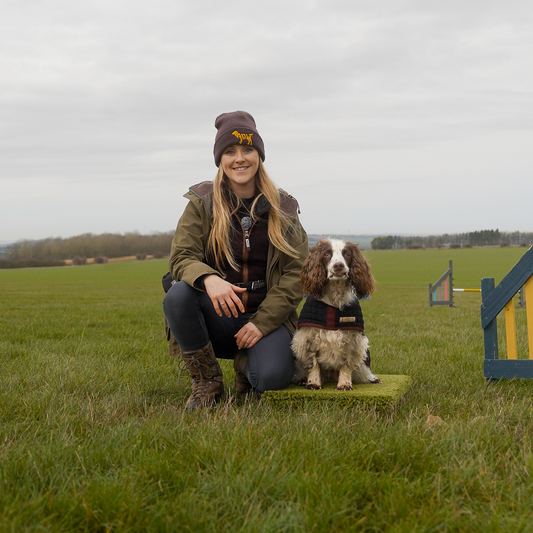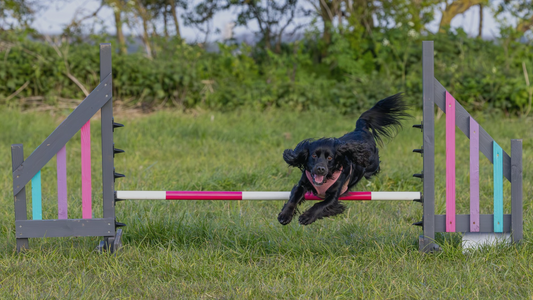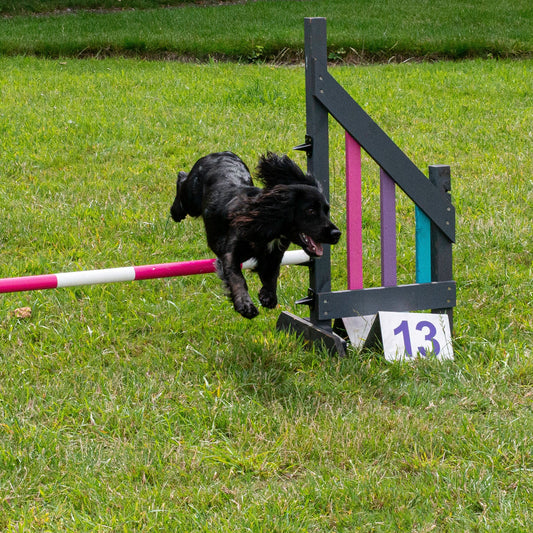In dog obedience competitions, the sit command is evaluated based on specific criteria. The ideal sit position that would score top marks in obedience competition would include the following:
-
The dog should sit quickly and smoothly in response to the handler's command.
-
The dog's body should be square and balanced, with their weight evenly distributed on all four legs.
-
The dog's head should be up and alert, with their eyes focused on the handler.
-
The dog's back should be straight, and their shoulders should be square.
-
The dog's hindquarters should be firmly on the ground, and their front legs should be straight and parallel to each other.
-
The dog should maintain the sit position until released by the handler.
-
The dog should exhibit attentiveness, obedience, and willingness to work with the handler.
Achieving a top score in obedience competition requires consistent training, attention to detail, and a strong bond between the handler and the dog.
Dog position boxes (also know as dog training boxes, shaping boxes or obedience boxes) can also be used to sharpen a dog's sit position in obedience training
How a position box can benefit your score
-
When introducing the box to your dog you guide them in, they feel the front lip and that’s where you stop and reward.
-
Having the lip at the front conditions your dog to change position but not take a step back or forward.
-
The box is designed with narrow sides, which prevent your dog from resting on their hip
-
Approaching from all angles you can teach your dog to get into position: heel, finish, front sit
Here are the steps you can follow:
-
Place the dog position box on the ground and encourage your dog to explore it. Use treats to lure your dog onto the box and praise them for standing on it.
-
Once your dog is comfortable standing on the box, give the "sit" command while your dog is on the box. As your dog moves into the sitting position, praise them and reward them with a treat.
-
If your dog moves out of the sit position, gently guide them back into position with a leash or your hand. Be patient and consistent, and reward your dog for staying in the correct position.
-
Gradually increase the amount of time your dog spends in the sit position on the box. You can also increase the difficulty by adding distractions or by walking around the box.
-
Practice the sit position on the box until your dog can maintain the position reliably. Then, you can start practicing the sit position in different locations and situations.
-
Remember to keep training sessions short and fun, and always reward your dog for their efforts. With patience and consistency, your dog will learn to maintain the sit position both on and off the dog position box.
Using dog position boxes to sharpen a dog's sit position in obedience training can help the dog to maintain the correct posture and improve their focus on the handler.
Like the content we put out and want to stay updated and in the know?

Join our subscribers to gain short weekly emails (under 1-minute reads) plus the opportunity to reach out & get professional advice on your own training challenges. Read answers to members' FAQs, receive training & equipment news offers and tips directly to your inbox.
Click here to join our subscribers
About the author: Hi 👋 I’m Emma, accredited as a professional dog trainer by the Institute of Modern Dog Trainers (IMDT). I help owners of energetic dogs achieve the dog-owning life they envisioned by providing robust obedience & agility training for dogs across my two venues in Balsham and Barton, near Cambridge.
Disclaimer: The content of this article does not include personalised advice and is for information purposes only. If you need individual advice or other enquiries please click here to get in contact or if you're not local to Anglian Dog Works, you can find a trainer in your area by going to the IMDT website: https://www.imdt.uk.com/find-a-qualified-imdt-trainer









